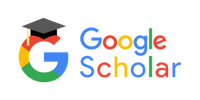Tugas Menyalin Teks Dokkai untuk Meningkatkan Kemampuan Mahasiswa dalam Membaca dan Memahami Teks Berbahasa Jepang
DOI:
https://doi.org/10.18196/jjlel.3229Keywords:
Japanese language, rewriting assignment, dokkai text, action researchAbstract
This study aims to describe the results of the implementation of the assignment model that is rewriting the dokkai text on the Dokkai course in the Japanese Literature Study Program of FIB UnSoed to improve students' Japanese language skills. This study used the action research method with the assignment of rewriting the dokkai text as its treatment. The research subjects were 107 students of the Japanese Literature Study Program of FIB UnSoed consisting of 4th-semester student class 2017 and 2nd-semester student class of 2018. The data collection used in two ways. They were giving tests and questionnaires to students. The data collected were then analyzed quantitatively and qualitatively to produce a conclusion from this study.
Based on the results of data analysis, the results of the test results for the 4th-semester student class 2017 got an average value of 69, the highest score of 96, and the lowest score of 40, while the 2nd-semester student class of 2018 got an average score of 62, the highest score of 94, and the lowest value of 55. Furthermore, from the results of the questionnaire filled out by students, 92.6% of students agreed with the assignment model because of the assignment of rewriting the dokkai text. The students could more fluently read and understand the contents of the text studied in class. At the same time, it trained them to get used to writing Japanese characters, whether it was hiragana, katakana, or kanji.References
Alwasilah, A. C.(2011). Pokoknya action research. Bandung: Kiblat.
Juangsih, J.(2012). Pendekatan story telling dalam pembelajaran dokkai: Penelitian terhadap mahasiswa jurusan pendidikan bahasa jepang. Jurnal Lingua Cultural. Vol. 6 No. 2 Hal. 183-187.
Lisdariyati.(2015). Korelasi kemampuan dokkai chuukyuu koohan dengan hasil nouryoku shiken n3 mata uji dokkai. Universitas Negeri Semarang.
Mulyasa, E.(2007).Menjadi guru profesional menciptakan pembelajaran kreatif dan menyenangkan. Bandung: Rosdakarya.
Rasiban, L.M. & Dianasari, W.(2017). Efektivitas metode peer reading dalam pembelajaran membaca pemahaman (dokkai)-the effectiveness of peer reading method in reading comprehension (dokkai) learning. Jurnal Japanedu. Vol. 2 no 1 hal 9-19.
Soekartawi.(1995). Meningkatkan efektivitas mengajar. Jakarta: PT Dunia Pustaka Jaya.
Suparti.(2014). Penggunaan metode penugasan atau resitasi untuk meningkatkan hasil belajar siswa kelas III dalam memahami konsep mengenal pecahan sederhana. Jurnal Pendagogia Vol 3 No. 1 Hal. 54-66.
Sutedi, D. (2009). Penelitian pendidikan bahasa jepang. Bandung: Humaniora.
Sutedi, D.(2019). Evaluasi pembelajaran bahasa jepang. Bandung: Humaniora.
Trahutami, S.I.(2017). Permasalahan pembelajaran Membaca Chuukyuu Dokkai di Perguruan Tinggi. Jurnal Kiryoku vol. 1 no. 4 hal. 48-54.
Yusuf, T. & Anwar, S.(1997). Metode pengajaran agama dan bahasa arab. Bandung: PT Remaja Rosdakarya.
Downloads
Published
How to Cite
Issue
Section
License
Copyright
Authors retain copyright and grant the journal right of first publication with the work simultaneously licensed under a Creative Commons Attribution-ShareAlike 4.0 International License that allows others to share the work with an acknowledgment of initial publication in this journal.
Authors are permitted and encouraged to post their work online (e.g., in institutional repositories, social media account, or on their website) after the article getting published in the journal, as it can lead to productive exchanges and earlier and greater citation of published work (See The Effect of Open Access).License
You are free to:
- Share — copy and redistribute the material in any medium or format
- Adapt — remix, transform, and build upon the material for any purpose, even commercially.
Attribution — You must give appropriate credit, provide a link to the license, and indicate if changes were made. You may do so in any reasonable manner, but not in any way that suggests the licensor endorses you or your use.
ShareAlike — If you remix, transform, or build upon the material, you must distribute your contributions under the same license as the original.
- No additional restrictions — You may not apply legal terms or technological measures that legally restrict others from doing anything the license permits.





